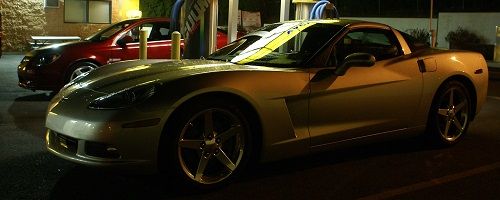Earlier today I was surfing around youtube and found a couple of videos of skylines and evos, dumping the clutch from like 5000rpm on a dyno. All of which claimed to have some anti-lag system, which might just be a fancy word for a 2-step, I dunno.
So I'm just looking for some insight to this out of curiosity.
My understanding is Anit-lag keeps you engine in it "powerband" while racing and it eats turbos.
Tinkles

2003 Cavalier 1SV
Bagged and Blown
there's two different things I can think of that would be referred to as anti-lag.
the first version is for drag cars.. also referred to as boost-builder. Its basically a fancy 2 step that helps to build boost off the line so instead of launching at atmospheric, you can actually launch with around 2-5psi of boost. Better than nothing.
the second version of anti-lag is for road course cars. Basically what they do is retard ignition timing extremely far so that the combustion actually happens in the manifold. the explosion pushes itself through the turbine housing and out the exhaust (usually with a pretty large flame coming out the rear)
it keeps the turbo spooled, but puts a lot of stress on the manifold and the turbine. Japanese dudes refer to it as "boom-boom turbo"
Anti-lag youtube video
it sounds like backfire on this subaru, but you can hear it clear whenever he comes into the turn or lets off the throttle

http://www.rallycars.com/Cars/bangbang.html]
read that, its a good description of what anti lag is.
horsepower is the force that determines at what speed you hit the wall, torque is the force that determines how far you take the wall with you after you hit it.
i have Anit-lag, it is one of the joys of SDS

There's an Evo at the strip that sounds like a firecracker at launch and between shifts. So now I know.

Listen F***ers. FASTERTHANAHONDA is a joke because I WORK FOR HONDA. I'll talk @!#$ about Fords to, that doesn't mean I can beat a 12 second mustang.
Awesome it all comes together, thanks. I remember in the summer, I was out for a cruise and was following an Sti that just kept on poping SO loud, like I mean I had the stereo blaring and I thought someone was popin' Caps at me.
Seems like a good idea for a drag or rally car if they are just going to be rebuilding the engine turbo after ever couple of races anyway.
Thanks for the info, Skwril
p.s. ur cars dirty!
the only damage your cat, if you have one!!





